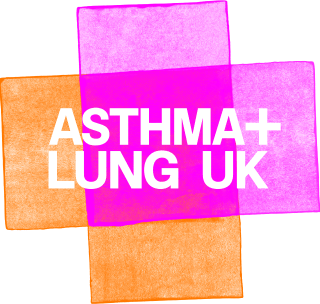Treatments for interstitial lung diseases
This section will help you to understand the range of pharmacological and non pharmacological treatments that are available to patients with ILDs.
This is not a substitute for completing an appropriate respiratory assessment module. For advice and support on choosing the right course for you, please see our training and development page.
Additional detail can be found in the NICE Idiopathic pulmonary fibrosis in adults: diagnosis and management guideline.
Pharmacological treatments for interstitial lung disease are limited, and can carry a high burden of side effects, which patients in primary care may need support to manage.
They can be divided into two broad categories:
- Antifibrotic medications to slow development of scarring (fibrosis) in the lungs.
- Immuno-suppressant medications to target inflammatory disease (which is potentially reversible)
Inhaled bronchodilators or corticosteroids have not been shown to slow disease progression or help with symptoms, except in cases where emphysema and fibrosis are both present.
Antifibrotics
Antifibrotic medications are used to manage pulmonary fibrosis by slowing the progression of lung fibrosis.
These therapies can reduce the rate of fibrosis progression, but they do not stop the scarring process entirely, or reverse existing scar tissue in the lungs.
Antifibrotics are prescribed by your patient's specialist team and are usually delivered directly to the patient at home.
Action for Pulmonary Fibrosis have information leaflets for patients who are taking antifibrotic medications.
Nintedanib
Nintedanib is licensed for:
- Idiopathic pulmonary fibrosis
- Progressive pulmonary fibrosis
in patients who have an FVC greater than 50% of predicted.
Patients can stay on Nintedinib for as long as the benefits continue to outweigh any side effects.
Nintedanib is taken twice daily, ideally 12 hours apart, with or directly after food. Patients should swallow the capsule whole without chewing or crushing it. The typical dose is 150 mg twice daily unless side effects are intolerable when it can be reduced to 100 mg twice daily.
The most frequently reported side effects are diarrhoea, nausea, vomiting, appetite loss, and abdominal pain. Liver inflammation and bleeding, such as epistaxis, are less common side effects.
Some medicines can stop Nintedanib working properly (for example, ketoconazole, clarithromycin, erythromycin, ciclosporin, rifampicin, carbamazepine, phenytoin and St John’s wort) and others can increase the side effects of Nintedanib (for example, blood thinning medicines like warfarin, apixaban, rivaroxaban and dabigatran can increase the risk of bleeding).
Pirfenidone
Pirfenidone is licensed for
- Idiopathic pulmonary fibrosis
in patients whose FVC is between 50% and 80% of predicted.
NICE suggest stopping Pirfenidone if FVC is reduced by >10% in 12 months as this suggests the drug is not working.
Pirfenidone is taken three times daily with or immediately after food. Patients should swallow the capsule whole without chewing or crushing it. The target dose is 801 mg three times daily, started at a lower dose and increased over several weeks. If side effects occur, a dose reduction may be considered by the medical team.
Side effects include photosensitivity. Patients should be advised to avoid direct sunlight, wear protective clothing, and apply SPF 50 sunscreen year-round. Some patients use UV protective clothing.
Other side effects such as gastrointestinal symptoms, nausea, vomiting and dyspepsia may be helped by taking the medication with food.
Smoking reduces Pirfenidone’s effectiveness, so smoking cessation is vital. Grapefruit and grapefruit juice should be avoided.
Medicines that can reduce the effectiveness of Pirfenidone include omeprazole and rifampacin.
Patients can drink alcohol whilst on Nintedanib and Pirfenidone, within recommended weekly units.
Routine monitoring
This is essential whilst a patient is taking antifibrotics. This includes:
- Regular assessments of lung function (CT scanning and spirometry),
- Side effect management, and
- Liver and renal function.
Immuno-suppressants
Immunosuppressant therapies are used to treat interstitial lung diseases which are inflammatory, such as hypersensitivity pneumonitis, sarcoidosis and auto-immune ILDs.
Immunosuppressants can reduce inflammation, but they are less effective in slowing fibrosis.
Immunosuppressants
Immunosuppressant medications include:
Corticosteroids: Prednisolone (usually given for sarcoidosis and for some cases of hypersensitivity pneumonitits)
Immunomodulators: Mycophenolate, Cyclophosphamide, Azathioprine, Methotrexate
Biologic Agents: Rituximab, Tocilizumabe
Your patient's specialist team will decide which medication and dose is best for your patient and how and where this should be prescribed. They will advise what monitoring is required.
All immunosuppressant drugs increase susceptibility to infections, including viruses like chickenpox, and may elevate cancer risk. Live vaccines are contraindicated during treatment with these agents.
Pulmonary rehabilitation
Lack of physical exercise and deconditioning are associated with a worse prognosis for patients with ILDs. So it’s vitally important that you help your patient to prioritise physical activity by referring them to rehabilitation – just as you would for patients who have had a heart attack.
Patients who have completed a Pulmonary Rehabilitation (PR) course experience less breathlessness and less fatigue. They will have greater exercise tolerance, better quality of life and have fewer exacerbations.
Pulmonary rehabilitation courses include:
- Structured education
- Lifestyle support
- Personalised exercises so that people with COPD can be confident to live well with their condition.
Watch this video for more information
A Cochrane review of patients who completed a PR course following an exacerbation of COPD, showed PR prevented further deterioration and exacerbations, and reduced admissions for 90% of participants. The benefits of PR can last at least 2 years.
However, patient uptake of PR is low so it is important that you are able to inspire your patients to attend. Read this quick guide to find out how to explain to your patients what PR is and how it will help them.
There are significant waiting times in some regions. To bridge this gap, signpost your patient to:
The A+LUK Keep Active Programme
From the point of diagnosis or whilst waiting for PR, the Keep Active Programme gives your patients everything they need to start moving more with their lung condition. It includes:
- Advice to help them move safely with their lung condition
- Breathing techniques to help during activity
- Gentle warm up
- Step-by-step exercises to help them feel stronger and more energetic
- Cool down and stretch
- Stories from people with lung conditions to inspire them to move more
Keep Active has been created by specialist respiratory physiotherapists for anyone living with a lung condition and includes three levels for your patient to choose from.
The videos are supported by the My Keep Active Handbook, which can be downloaded or ordered.
Oxygen therapy
Patients with ILD typically suffer severe breathlessness. This worsens as their FEV decreases.
As the disease progresses, patients with ILDs often require long-term oxygen therapy (LTOT) due to chronic hypoxemia and to avoid complications such as pulmonary hypertension, right-sided heart failure (cor pulmonale), and polycythemia.
This group of patients have higher requirements for oxygen than people with COPD. In ILD, ambulatory oxygen may be required even in the early stages of disease because of the exertional desaturation which is a feature of the condition.
Refer for oxygen assessment if a patient presents with saturations of <92% at rest, or drops by more than 4% to <90% on exertion. The Sit to Stand test is a useful way of identifying this.
LTOT via an oxygen concentrator or liquid oxygen may be required as the disease progresses, for a minimum of 15 hours per day. The flow rate will need increasing regularly, and the patient must be provided with a back up oxygen cylinder at home.
Venturi masks may be more effective than nasal prongs because the patient's respiratory rate will be higher, due to the reduced. Patient preference must guide this decision, as some may prefer nasal prongs. Humidified oxygen may also be required.
See our patient guide for living with home oxygen. Action for Pulmonary Fibrosis also have information for patients on home oxygen, including advice on coping with the cost of using an oxygen concentrator.
For personalised advice and support, signpost your patient to the A+LUK Helpline 0300 222 5800 to speak to a specialist respiratory nurse or healthcare advisor.
Cough management
Cough is a major symptom of ILDs. It is a challenging and distressing symptom for patients, as simple activities such as talking, exercising, or even shifting position can trigger coughing episodes.
Understanding and managing cough in pulmonary fibrosis is essential for improving patients’ quality of life. Treating cough in pulmonary fibrosis is difficult, as it often does not respond well to medications.
Coughing is a natural reflex that protects the lungs by expelling irritants and foreign particles. During a cough, the vocal cords close tightly, and over time, this repeated action can lead to inflammation and irritation of the vocal cords, which can worsen the cough and sometimes lead to mucus production. This cycle of irritation and mucus production can be challenging to disrupt.
Many patients experience cough hypersensitivity. which is a heightened sensitivity to stimuli like cold air, perfumes, smoke, vapes and chemicals like cleaning products and air fresheners.
Types of Pulmonary Fibrosis Cough
Patients with pulmonary fibrosis may experience different types of cough:
Dry or unproductive cough: This may be triggered by environmental changes, exposure to smoke or dust, strong odors, physical exertion, or even talking or laughing. It is often accompanied by cough hypersensitivity.
Productive cough: This cough helps to clear mucus, food particles, or fluids from the airways, supporting normal breathing and airway protection.
Currently, no approved or licensed treatments specifically target cough in pulmonary fibrosis. However,several treatable factors may contribute to or exacerbate cough including:
- Acid reflux
- Postnasal drip (often related to sinus issues)
- Medication side effects
- Respiratory infections
- Airway inflammation
- Other chest conditions
Potential Treatment Options
Depending on contributing factors, the following treatments may be offered:
- Proton pump inhibitors for acid reflux
- GI motility agents for non-acid reflux
- Inhaled steroids for eosinophilic cough
- Oramorph for cough hypersensitivity
- Codeine Phosphate Linctus
- Gabapentin (an anticonvulsant medication for severe cough hypersensitivity)
For mucus-productive coughs, mucolytic therapies may help thin mucus, making it easier to clear from the lungs.
Specialist Cough Clinics:
Patients with persistent cough that is not helped by treatment can be referred to a specialist cough clinic for further advice and management.
There are currently 8 specialist cough clinics in the UK which are. These links are for information only. To be referred on to a Specialist Cough Clinic you will need to go through your ILD Consultant. This will be an option if treatment options for your cough have been explored and not been of benefit.
Action for Pulmonary Fibrosis' factsheet on cough management outlines coping strategies for ILD cough.
Lung transplant
For a select few patients, Lung transplantation may be considered if pulmonary fibrosis progresses and remains unresponsive to medical therapy.
Lung transplants are relatively rare. There were 101 lung transplant procedures in the United Kingdom in 2022-2023. Not all of these were for people with pulmonary fibrosis.
If deemed potentially suitable by a their specialist team,, patients will be referred to a transplant unit for comprehensive evaluation before being placed on the waiting list.
Action for Pulmonary Fibrosis have comprehensive information for patients about lung transplantation





